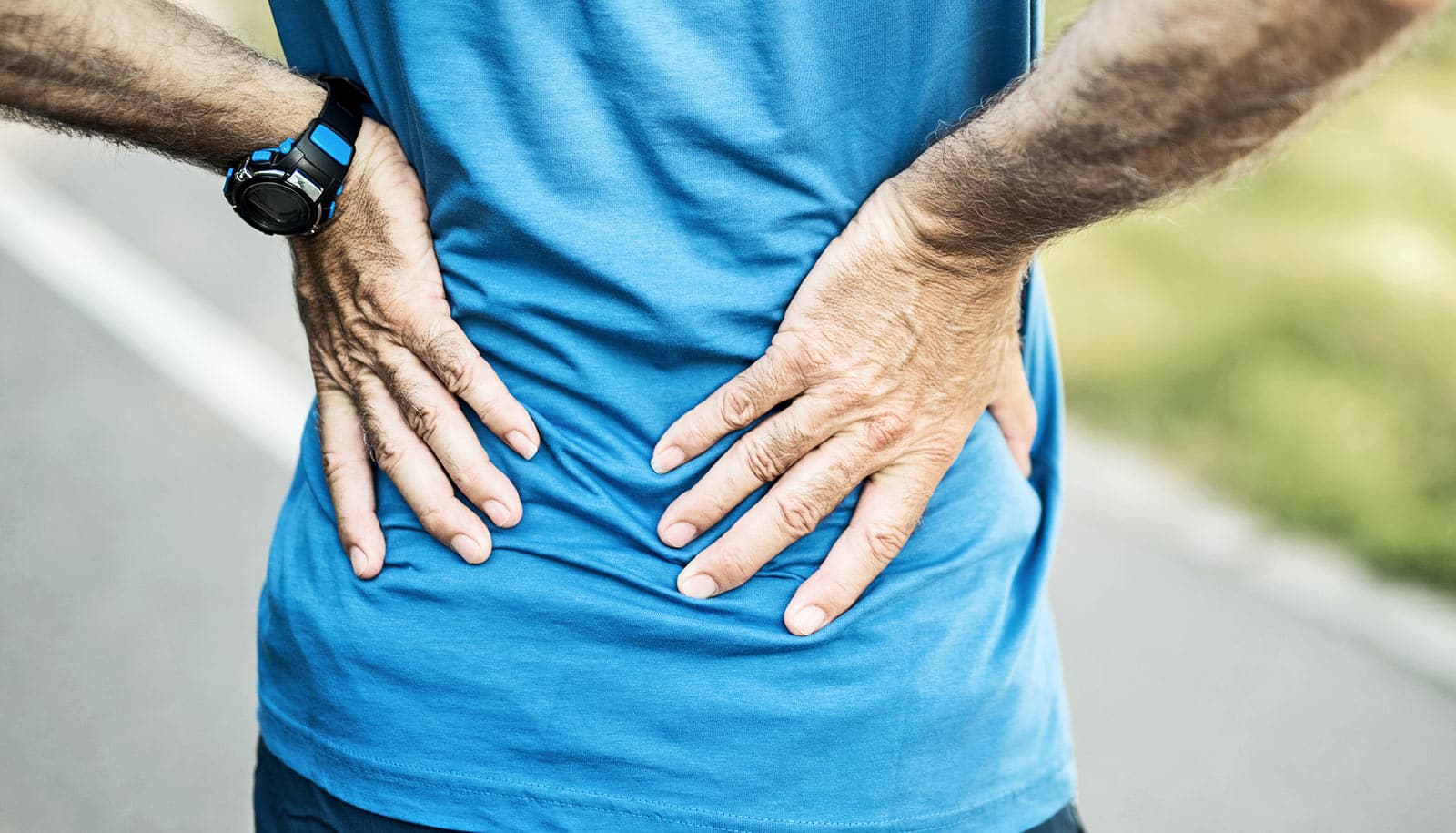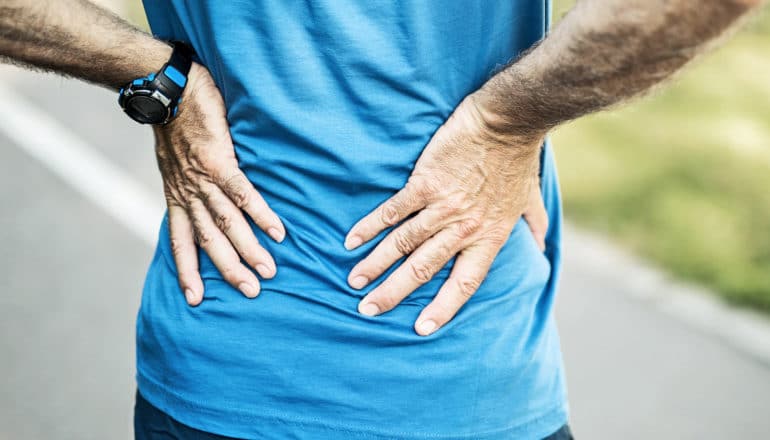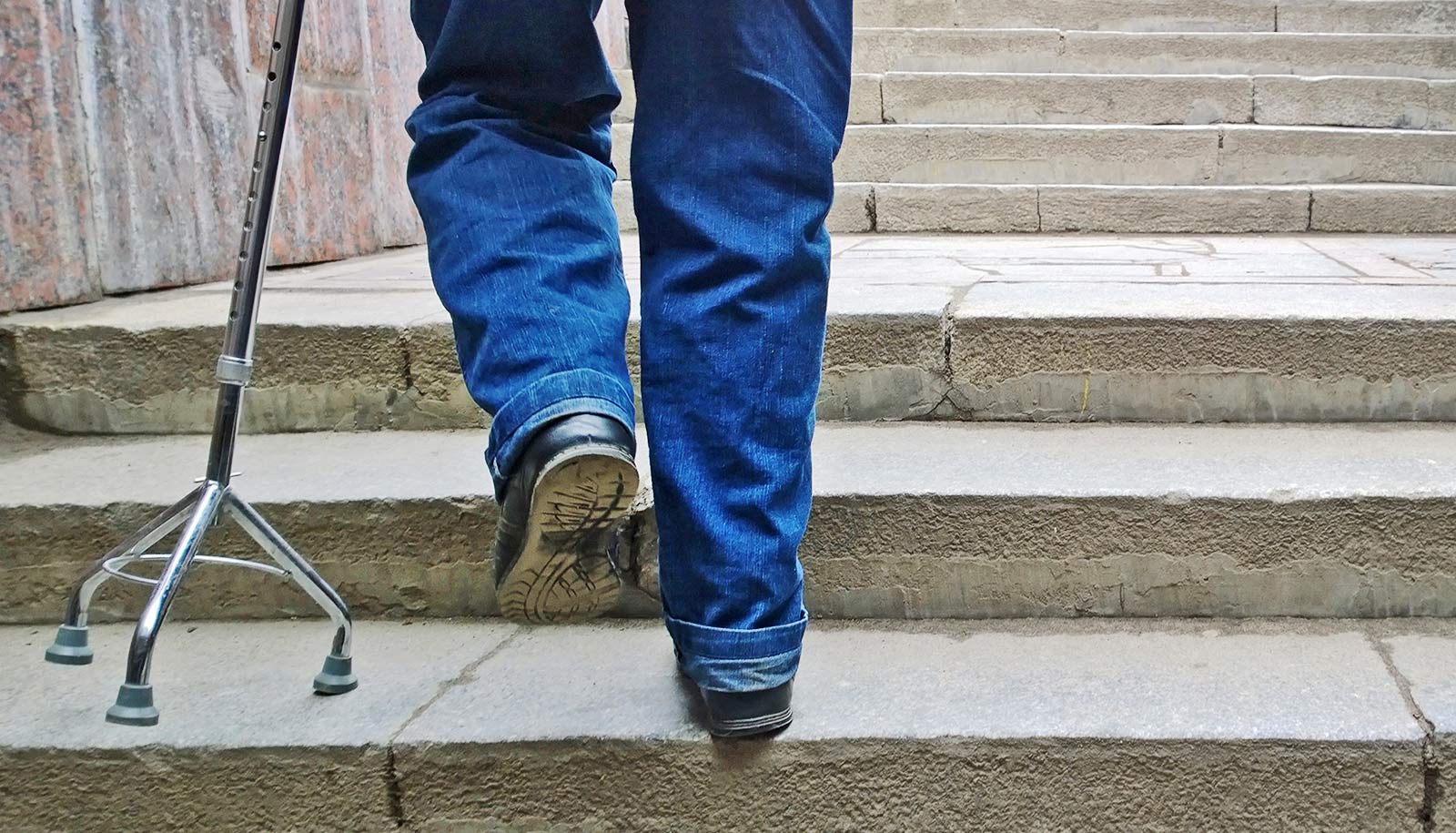
(Credit: Getty Images )
‘Swiss cheese bones’ could cause mystery low back pain
The vast majority of low back pain emerges without injury, especially in old age. A new study sheds light on what may be going on.

The vast majority of low back pain in people may have roots in an overgrowth of pain-sensing nerves into spinal cartilaginous tissue, a new study with genetically engineered and old mice shows.
An estimated 80% of people worldwide will experience low back pain in their lifetimes, sometimes owing to strain or injury. But the vast majority of low back pain emerges in the absence of injury, especially in older age, researchers say.
Researchers designed the new experiments to investigate whether a painful overgrowth of sensory nerves into the cartilaginous endplates in the spine could be the root of these unexplained cases.
The findings in Nature Communications may eventually help develop new treatments that target abnormal nerve growth in the spine.
Cartilage as a source of back pain
The spine can be characterized as a series of joints, each made up of a bony vertebrae, a spinal disc, and a layer of soft tissue called cartilage endplates that cushion the vertebral bones to protect them from the weight of the body.
“The cartilage endplate is the cushion on a seat that makes it more comfortable. But, like similar tissue in knee and hip joints, it succumbs to wear and tear over time,” says Xu Cao, professor of orthopedic surgery and researcher at the Johns Hopkins University’s Institute for Cell Engineering at the university’s School of Medicine.
Cao says he and his team have long suspected that age-related changes in the tissues that make up the spinal column provide fertile ground for abnormal nerve growth, making the normal load-bearing work of the spine painful.
To study this idea, Cao and his team analyzed samples of the bony end plates of vertebrae from mice aged more than 20 months, the human equivalent of about 70-80 years old. The researchers found that the soft, cartilaginous tissue in the mice’s spines became hardened and resembled diffuse bone with a Swiss cheese-like structure.
In previous studies, Cao’s team reported that an aging or instable spine induces the cartilage endplates to change into porous bony structures that provide spaces for nerves to penetrate the dense structure of the bone. A specialized cell type, called osteoclasts, creates the porous bone structure where the cartilage should be. Cao thought that perhaps the signaling molecule netrin-1 that osteoclasts secrete during this process invited abnormal nerve growth and the resulting back pain.
“Cartilage does not typically have nerve and blood vessels. However, when cartilage becomes a porous bony structure with growth of nerve fibers, it could be the source of back pain,” he says.
Joint instability
To test this idea further, Cao and his colleagues first analyzed tissue samples from the spines of old mice under the microscope, labeling the hole-building osteoclasts and nerve fibers with fluorescent tags.
They found that osteoclasts and nerve fibers were present in the same areas of vertebrae, suggesting that the osteoclasts could be signaling the nerve growth in some way, perhaps with netrin-1.
Next, the team designed an experiment to prevent the osteoclasts from producing the abnormal “Swiss-cheese” bone growth and secreting netrin-1 to see if that could stop nerve growth in the cartilaginous tissue—and the accompanying pain.
They genetically engineered mice to lack the gene that codes for osteoclast formation, and performed a surgery on the mice to destabilize the joints between their vertebrae—mimicking similar instability seen in people with low back pain.
The researchers found that the mice lacking osteoclast cells had fewer pain-sensing nerves in the endplates of their vertebrae than mice with the gene.
Those results show that the porous structure of cartilaginous endplates is an important lead in understanding how unexplained low back pain develops, Cao says. His team next plans to conduct laboratory experiments using compounds that slow the abnormal bone growth to test their potential to treat low back pain.
The technology is available for licensing through Johns Hopkins Technology Ventures, which also is pursuing patent protection.
Additional researchers are from Johns Hopkins; Central South University, China; the First Affiliated Hospital of Sun Yat-sen University, China; and the Howard Hughes Medical Institute. Fox Gift supported the work. The researchers report no competing financial interests.
Source: Johns Hopkins University
The post ‘Swiss cheese bones’ could cause mystery low back pain appeared first on Futurity.
Share this article:
This article uses material from the Futurity article, and is licenced under a CC BY-SA 4.0 International License. Images, videos and audio are available under their respective licenses.
Related Articles:
Many older adults use meds to block arthritis pain
Sept. 14, 2022 • futurityEpilepsy drug may slow osteoarthritis joint breakdown
Jan. 3, 2024 • futurityLinks/images:
- https://www.futurity.org/lower-back-pain-crowdsourcing-1955812/
- https://doi.org/10.1038/s41467-019-13476-9
- https://www.futurity.org/stem-cells-resting-zone-1905532-2/
- https://www.futurity.org/preosteoclasts-bone-osteoporosis-778212/
- https://www.futurity.org/treacher-collins-syndrome-1266422-2/
- https://www.hopkinsmedicine.org/news/newsroom/news-releases/swiss-cheese-bones-could-be-cause-of-unexplained-low-back-pain
- https://www.futurity.org/back-pain-causes-bones-2256902/
- https://www.futurity.org


